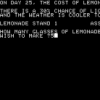the world required to tell the story well is huge and open like say in Fallout
I will assume you mean Fallout 3 (and assumptions always end up biting my behind), so I'd like to point out how small and constricted that world actually is. First, even Megaton is its own loaded level, as is the interior of every building and metro. All of the DLC loads completely separate environments as well. Additionally, if you go up high on practically any building or mountain, you can see the whole map (excluding console versions). It is not big at all in the Daggerfall/Morrowind sense (those games were GIANT). Second, walking is not gameplay. Never rely on holding down "W" as your primary mechanic.
So, unless you are telling a story about hiking, I'd consider "huge" and "open" to actually become obstacles to your game and story. Fallout 3 wasn't tiny (relatively speaking) because Bethesda couldn't manage to stream bigger levels. It was smaller and focused and packed with gameplay. Don't let this idea of "hugeness" ruin your game and story. Because walking is boring (see Dear Esther).
Should I assume that game engine solves such problems internally (using occlusion culling, optimal collision detection etc)
No, you shouldn't. I spend a considerable amount of time baking my occlusion culling and navigation meshes (features I'm not sure are available in Unity's free version). The settings will need tweaked and the only way to really do it is trail and error (at least until you get your own baseline settings). You'll have to code your own method for streaming "terrains" in Unity, which, while not impossible, is time consuming.
You'll also need to manage your own LoD settings to get the true benefits of these optimizations. I've made many large environments in Unity and the biggest issue is memory problems in the Unity editor itself (c'mon 64-bit! I need you!).
I have never been working on a project like this and I need some advice.
The best piece of advice I can give is to work on a smaller project. Really. I'm making an environment (UnityPro using it's built in terrain controls -- you can see screens on my dev journal) that is only roughly four square kilometers -- and only one kilometer is navigable -- and I'm struggling to complete it all by the end of the summer.
Prototype a smaller game using your existing mechanisms and art assets. Prove your concept and practice a bit.
ETA: My Dev Journal with Screenshot http://www.gamedev.net/blog/1880/entry-2259820-creating-a-halloween-environment/









